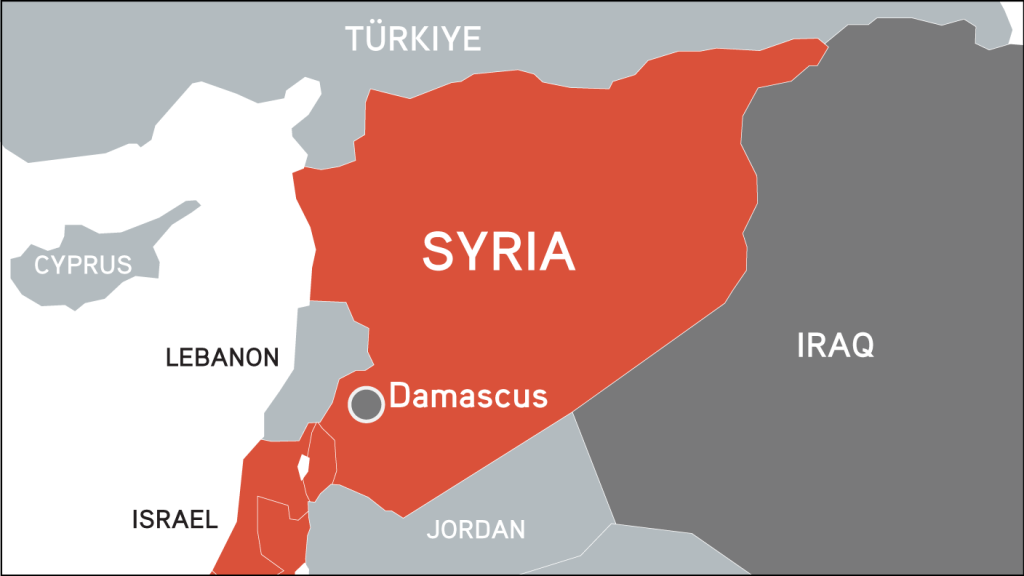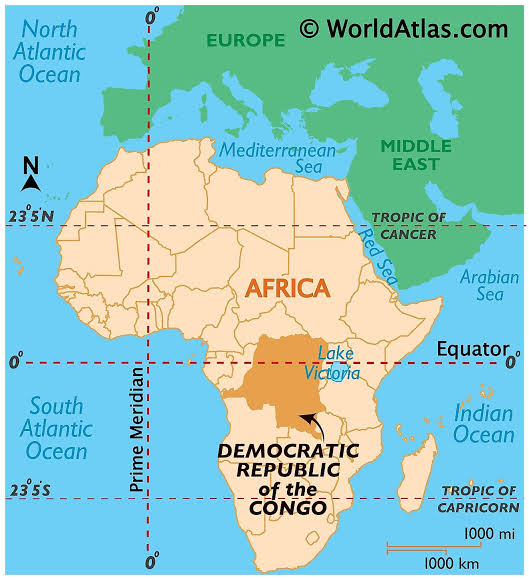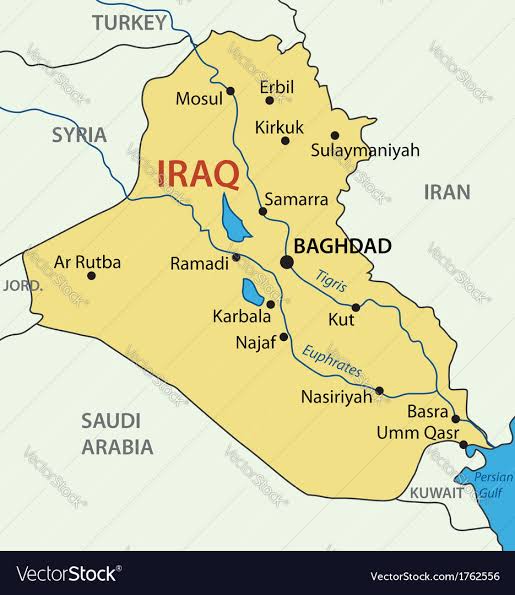The automotive industry is about to undergo a major shift. Manufacturers are already preparing a range of electric vehicles. Electric vehicles (EVs), including those that are traditionally powered by gasoline engines, will be introduced to consumers in various segments. In the future, consumers will be able to choose from a wide range of EVs and hybrids as well as gasoline-powered cars, ranging from everyday drivers to supercars.
Many enthusiasts still love traditional internal combustion engines, and automakers have responded with exciting new models. Aston Martin and Lamborghini, among others, plan to release cars that celebrate the thrills of gasoline engines. The wide range of new options available will ensure that buyers have a diverse selection of vehicles to choose from between now and the year 2028.
The Key Takeaways
- Electric vehicles (EVs), gasoline-powered cars, and hybrids are all part of the automotive industry’s expansion. There are luxury, performance and everyday models.
- Electric vehicles are becoming more common in all segments of the market, including luxury and high-performance cars. Audi, Tesla and Polestar have introduced powerful electric cars.
- Even with the rise of electric vehicles, gasoline engines are still in high demand. Aston Martin, Chevrolet and other companies are launching gasoline-powered models to cater to enthusiasts.
- Future cars will be equipped with advanced technologies such as electric powertrains and AI-driven systems. They will also feature innovative designs that focus on efficiency and sustainability.
- The Alfa Romeo Giulia Quadrifoglio EV is one of the most notable upcoming models. Other noteworthy EVs include the Aston Martin Valhalla EV and the BMW Neue Klasse EV.
- TThe trend is also evident in SUVs and trucks. Models like the Cadillac Escalade IQ and Chevrolet Silverado EV and GMC Sierra EV show a shift to electric power across all vehicle types.
1. Dodge Charger Daytona SRT Electric Vehicle

- Power: up to 600 horsepower
- Electrical System: 800-volt architecture
- Estimated range: approximately 500 miles
The Dodge Charger Daytona SRT-EV is set to debut in 2024. It promises to bring a new era of muscle cars with its electrified vigor, impressive performance metrics, and electrified power. The new model is ready to replace current Chargers and Challengers, showing Dodge’s commitment to innovation.
2. Alfa Romeo 33 Stradale Supercar
- The launch is expected in 2024
- Design Influence: Retro-inspired aesthetics
- Powertrain: Potentially, the final non-hybrid vehicle
- Expectations: Before the launch of the electric Giulia
Alfa Romeo will unveil a new supercar with a classic design. The car is expected to be revealed before the end of the year. The initial discussions alluded initially to a hybrid plug-in system. However, the majority of reports indicate that a gasoline engine could power this vehicle. This would mark a possible swansong in Alfa’s lineup for models with pure combustion engines, according to.
3. Aston Martin Valhalla

- Launch of: early 2024
- Configuration: Mid-engined
- Engine Type V8 with flat-plane crank
- Horsepower: over 900 hp
- Acceleration : 0-60mph in about 3 minutes
Aston Martin Valhalla has a hybrid engine that produces 998 horsepower. It combines a 4.0-liter V8 twin-turbo with three electric motors. Aston Martin will produce 999 units. Recently released images show the final production model, which is different from the James Bond prototype seen in “No Time To Die.”
The Valhalla is priced at about $800,000. This does not include any additional options. It also features a carbon fiber chassis. This model is Aston Martin’s bold attempt to compete against elite brands such as Ferrari, McLaren, and Lamborghini, according to Forbes.
4. Lincoln Star EV

- Arrival date 2025
- Design Inspiration: 2022 Star concept
- category: luxury electric SUV
- Expected Traits: Elegant styling, upscale ambiance
- Starting Price Projected: Around $75,000
The 2025 Lincoln Star is a blend of Lincoln’s Corsair, Nautilus, and spaceship models. The 2025 Lincoln Star is distinguished by its dynamic and striking front end. It also has a lower and longer profile than the Corsair or Nautilus.
Lincoln has developed a forward-looking strategy and model for its electric vehicles. Lincoln claims that the Star is a new design philosophy that focuses on aesthetics and human-centric features. It also emphasizes smoothness and creating a peaceful interior environment.
5. Audi’s Upcoming Electric Vehicle

- Coming in 2024: New Market Entry.
- Powertrain Dual Electric Motors
- Architecture: Built upon the advanced PPE Platform.
- Charging: Uses a high capacity 800-volt system.
- Range Capable to travel up to 400 miles with a single charge.
- Performance: expected to produce 469 horsepower.
Audi’s A6 e-Tron is based on an innovative PPE architecture. The PPE architecture not only allows for rapid charging at 800 volts but also offers a range of impressive power and impressive range with the twin electric motors.
6. Bentley EV

- Arrival is scheduled for 2026
- Strategy: Transition to electric-only models starting 2026
- Design cues: Inspired by the EXP 100 GT Concept revealed in 2019.
Bentley’s goal of entering the electric world with its aptly named Bentley EV is slated for showrooms in 2025/2026. This EV, under the direction of Bentley CEO Adrian Hallmark, is expected to have an output of 1,400 horsepower. This will instantly put it in the top echelon of high-performance electric vehicles. This automotive marvel is expected to accelerate from 0-60 mph in just 1.5 seconds. Topspeed describes it as a vehicle that promises speed and sensory experiences beyond comparison.
7. Toyota GR Electric Sport Car

- Arrival year: 2026
- Brand: Toyota
- Features:
- Engine Sound Simulation
- Virtual manual transmission (similar to the new Lexus sport model)
Toyota’s entry into the electric performance sector includes a GR sports car with an innovative auditory experience and a simulated transmission, slated to debut in 2026.
8. BMW Neue Klasse EV

- Launch Year: 2020
- Architecture: Innovative
- Inspiration: i Vision D concept
- Characteristics:
- Electric range with a Boosted Range
- Advanced Technology
- Expectations: Concept design is close to completion
- Details to be announced in the future.
BMW Neue Klasse Electric Vehicle is a revolutionary leap in the electric vehicle lineup of the brand. Its debut is scheduled for 2025. This electric series, based on the i Vision D design lineage of BMW’s electric vehicles, promises to improve both range and technology. It is expected that the production version will closely mirror its concept inspiration. As the year goes on, we expect to learn more specifics about the New Class.
9. Chevrolet Corvette ZR1 / Zora

Year ExpectedPowertrainThe Performance of a
2025 Twin-Turbo 5.5L V8 0-60 sec in 2.5 seconds
Chevrolet’s Corvette ZR1 is set to redefine the high-performance sports car. It’s equipped with a powerful twin-turbo V8 engine that is expected to produce upwards of 800 horsepower. It will also share the same dual-clutch eight-speed transmission as the current Z06. The model will be unveiled in 2025, and sales will begin in early 2026.
10. Ferrari Hypercar

- Arrival expected: 2025
- The spiritual lineage of the successor to the legendary LaFerrari
- Design teaser: Spotted prototypes indicate an aggressive aesthetic, with an S-duct on the hood and a pronounced rear spoiler.
- Performance evolution: Possible transition from the V12 engine to a compact twin-turbocharged V8.
Ferrari could take inspiration from models like the Enzo and LaFerrari, which adopted a nostalgic approach, or follow the equine-themed naming as seen with the Purosangue, according to a href=”https://www.motor1.com/features/666826/2025-ferrari-hypercar horsepower price specs/”>Motor1/a>. Motor1 suggests that the company could take inspiration from the Enzo, LaFerrari, and other models, which have a nostalgic feel or the equine theme of the Purosangue.
This new hypercar could be a departure for Ferrari from its traditional V12 engine. The initial reports and spy pictures suggesting a hybrid engine suggest a possibility of a similar V6 engine to that in the 296 GTB. This is especially true given the electrical warning sticker observed on test cars. The V6 engine that already produces 680 horsepower on the 296 GT3 racecar could be coupled with an electric motor to produce a combined output of over 1,000 horsepower. This would represent a substantial increase in horsepower over the 986 hp of the current SF90 and is in line with Ferrari’s ongoing trend to improve performance.
11. Hyundai N Vision 74

- Production Status Uncertain
- Initial display: premiering in 2022
- Production Speculation: Mixed Signals from Hyundai
Hyundai’s potential to produce the N Vision 74 Sports Car has been a subject of speculation. Autoblog highlighted that initial showcases prompted discussions about the launch of a limited-edition model. Hyundai has not been consistent, sometimes denying, and at other times confirming, the prospect of manufacturing. Recent buzz indicates a shift in focus towards production. The final decision is still pending confirmation.
12. Lamborghini Revuelto SVJ
- Anticipated version: A more powerful variation, the Revuelto SVJ is speculated as being in the pipeline.
- Powertrain: It is predicted that the hybrid V12 will be retained but with increased output.
- Design language: Visual speculations indicate a bolder aesthetic along with amplified performances.
13. Lexus LFA EV
Lexus will develop an electric successor for the acclaimed LFA. It will take inspiration from the Electrified Sport Concept, which was unveiled in the year 2021. The upcoming electric sports car will deliver incredible acceleration. It is anticipated that the 0-60 mph speed ranges between two and three seconds. It may also feature an electric vehicle’s unique trait: a manual transmission. Car and Driver has projected that the launch will take place in 2025. This is a new chapter for Lexus, which is known for its performance vehicles.
14. Mercedes-AMG GT

The latest version of the Mercedes AMG GT is scheduled to be released in 2025. It retains the classic V8 engine configuration. The mild hybrid option will enhance its capabilities compared to a completely electric system. The AMG GT 43, and AMG GT 53 are the first variants to arrive. They both represent the continued evolution of the model while still honoring the design heritage.
15. Mercedes-Benz EQA Electric Sedan

Mercedes-Benz will introduce its new entry-level vehicle for electric vehicles, the EQA Sedan, in 2024. The EQA is a hybrid of the CLA and A-Class with combustion engines. It combines the sportiness of a coupe while maintaining the comfort of a 4-door. The EQA is expected to have a power output of at least 200 hp, marking another step in the brand’s progress toward a completely electric lineup. It is reported that it will be launched in May 2024.
16. Polestar 5

- Debuting: 2024
- Positioning Premium Flagship Electric Vehicle
- Rivals: Porsche Taycan, Audi E-Tron
- Maximum 884 horsepower
- Charging Capability: 800-volt system
- Fast Charge: About. Fast Charger: 80% in just 20 minutes
- Starting Price: Around $90,000
- Noteworthy A strong competitor in the luxury electric vehicle market offering rapid charging and robust power.
17. Polestar O2 Convertible

- Introduction: The Polestar O2 Convertible is expected to arrive in 2026.
- Designation: The product will be known as Polestar 6 when it hits the market.
- Electric Roadster: This electric car has over 800 horsepower.
- Notability: It marks Polestar’s debut in the convertible segment, and it stands out as an all-electric convertible.
18. Porsche 718 Boxster / Cayman EV
- Transition from Gasoline to Electric: According to Motorauthority, Porsche 718 Boxsters and Caymans will be transitioning to electric engines in 2025.
- Electric platform utilized: This transformation is expected to use the Volkswagen Group PPE EV Platform.
- Power Expectations: A minimum of 450 horsepower should be expected for entry-level variants.
- Weight management: Porsche’s main focus is on managing the vehicle’s curb weight in order to maintain its performance and handling characteristics.
- Trim Variations Additional and more powerful trims will be introduced in the future.
19. Tesla Roadster Update
- Production to begin in 2024
- Release Date: Potential release in 2025
The Tesla Roadster could be a reality thanks to the expansion of Tesla’s production capabilities. The production model could be released in 2024.
20. Toyota GR Prius

Concept images of the Toyota GR Prius show a bolder, more powerful design. A wider grille and improved aerodynamics distinguish the concept car. It also features new wheel designs.
- Design: More aggressive aesthetic
- Aerodynamics: Improved performance
- New Selections of Tires and Wheels are expected
- Power: Potential increase, details not disclosed
Toyota has not yet confirmed the exact specs, but the evolution of the Prius to a sportier market within the SUV-heavy world is an interesting development.
21. Alfa Romeo Giulia Quadrifoglio EV

- to debut in 2025
- Power Outlook: up to or exceeding 1,000 horsepower
- Drivetrain: All-electric
- Variants: Additional body types are possible, including a wagon
According to a Car and Driver source, Alfa Romeo will continue its transition to electric cars with the Giulia quadrifoglio. This sedan’s electric version is expected to have a powerful power output, possibly exceeding 1,000 horsepower. The brand is also looking to diversify its lineup as it moves towards electrification.
22. Chevrolet Equinox / EV

- Availability: Early 2020
- Versions: Combustion and Electric
- Design:
- Gas model: New robust styling and prominent grille
- Model electric: Concept vehicle shown
The new Chevrolet Equinox will have a more bold look and a new electric model.
23. Fisker Pear

The automotive industry anticipates that the Fisker Pear will arrive in the near future, given the positive trajectory of the Fisker Ocean. This model is a departure from the traditional hatchback and crossover classifications. Henrik Fisker suggests a unique body type with an innovative trunk lid that is designed to be accessible in small spaces. Although a launch date has not been announced, speculation in the industry points towards its debut on the European market.
24. Genesis GV90

AspectDetail
Platform E-GMP
You can also Design Your Three-row electric SUV flat-floor architecture.
Expected Features Dual-motor all-wheel drive
Year of release 2024
It is expected that the upcoming Genesis GV90 will be the largest SUV on the EGMP platform. This size is similar to the upcoming Ioniq 7 or EV9. The vehicle’s dedicated electric design is expected to prioritize the vehicle’s space, with flat flooring throughout. The vehicle’s specifications have not been revealed, but they are likely to include dual motors, all-wheel drive, and spaciousness.
25. Hyundai Ioniq 5 N

- Launch year: 2024
- Powertrain:
- Horsepower: hp 600
- Torque: 600 lb-ft
- Battery technology: Advanced Iteration
- Driving range: A little below the current AWD model
- Comparable Models:
- Performance and Price: Compares to or exceeds the Kia EV6GT
The 2025 Hyundai Ioniq N is scheduled to hit the showrooms in March 2024. The dual electric motors of this electric crossover provide a power base of 601 horsepower. It features the N Grin boost function, which temporarily increases power to 641 horsepower. This will enhance acceleration for 10-second bursts.
26. Jeep Recon
- Release date: Scheduled for 2024
- Heritage: inherits the DNA of Wrangler
- You can also Design Your Own :
- Doors: Detachable
- Roofs can be removed
- Capability :
- Jeep Selec Terrain system: Off-road ready with Jeep
- E-locker axles technology
- Durable off-road tires
- The platform is built on the Stellantis STLA Large platform
- Performance: Specifications regarding range and power are yet to be revealed
27. Lucid Gravity

The Lucid Gravity is a large SUV by Lucid Motors that has been tested. This indicates the progress of its production. This model boasts a three-row layout that can accommodate seven passengers. It promises to deliver a combination of performance and roominess similar to the Lucid Air. Lucid will begin accepting reservations in the next year to prepare for the launch of the vehicle in 2024. The interior is expected to be spacious, with a powerful engine and a long driving range.
28. Mercedes-Benz EQG

- Expected Market Arrival: 2020
- Innovative Battery Technology: Uses silicon-anode tech for increased range and faster charging.
- Design Philosophy: The electric version is reminiscent of classic G-Class styling.
- Performance: Electric vehicle performance is expected to be impressive.
- Available: Sales will begin in 2020.
Mercedes EQG, a concept first presented a few years ago, is close to its market debut. Potential buyers are eagerly anticipating it. The electric vehicle will be shown as a prototype in Las Vegas at the CES Technology Show this January.
Although pricing is still under wraps it’s expected that the EQG would carry a premium, starting likely at more than PS100,000.
29. BMW M2 CS

With its anticipated debut in 2025, the BMW M2 CS will amplify high performance. The current M2 will lose its 453 horsepower to the CS version, which is rumored to exceed 500 horsepower. The eight-speed transmission will be upgraded to support this enhancement. A manual transmission will not be available for those who prefer traditional gear shifting.
30. Mini Countryman

The Mini Countryman will be able to grow 5.1 inches longer and 2.4 inches higher. The new Mini Countryman will be built on the FAAR platform that is shared with the electric BMW iX1. This marks a significant evolution over its predecessors. The is expected to make its debut by February 2024. The revamped Countryman will redefine what Mini enthusiasts expect of a crossover.
31. Porsche Macan EV

Battery CapacityHorsepowerTorque
100 kWh Maximum 603 >738 lb-ft
With its powerful battery and impressive power output, the all-electric Porsche Macan will energize roads. The Porsche Macan EV is the first model in Porsche’s small SUV range to be electric. The anticipation is growing as vehicles have been spotted in testing. It’s expected to be unveiled early next year.
32. Rivian R2

Rivian will introduce the R2 in 2026. It is a smaller SUV that Rivian hopes to make more affordable compared to its larger R1S. The R2 will be a smaller version of the Porsche Macan and retain Rivian’s all-wheel dual motor system. It is expected to deliver a powerful estimated output of 600 horsepower. Digital trends say that the automotive community is eagerly awaiting its arrival, with high expectations of performance and innovation.
33. Scout Electric SUV

- Production to begin in 2025 at U.S. facilities
- Vehicle Type Electric SUV
- Design Inspiration: Rugged and adventurous, similar to models such as Ford Bronco or Jeep Wrangler
- Power: Entirely Electric
Scout is preparing to launch an electric SUV that combines adventure-focused design with electric efficiency. Production will begin in the U.S. This shows Scout’s commitment to revitalizing its brand and focusing on modern electric mobility. Scout will release an electric pickup truck after the SUV.
34. GMC Sierra EV

- Available: Coming 2024
- Models: Including Denali Edition 1
- Price range: Starting at $100,000
- Power: up to 754 horsepower
- Range: approximately 400 miles
- Release phases: More accessibility models are expected later in 2024 and 2025
GMC has added the 2024 Sierra EV to its lineup of electric pickup trucks, joining the Hummer EV Pickup. The Sierra EV was designed to be a more practical alternative to the Hummer, and it shares many features with the Chevrolet Silverado EV.
GMC’s first model will be the Denali Edition 1, a luxurious vehicle with 754 horsepower dual-motor all-wheel drive and a range of 400 miles.
This model, priced at over $100,000, will be replaced in 2025 with more affordable models like the Elevation or AT4, which offer lower performance specifications for a lower price. According to Car and Driver, the Sierra EV is only available as a crew-cab model with a 5-foot-11-inch bed.
35. Ram 1500 Rev

- Due for release in late 2024
- Architecture: Utilizes Stellantis STLA platform
- Drivetrain: Dual motor set-up
- Power: 654 horsepower
- Range: Up to 500 miles of range per charge
Future Cars Innovations: 2023-2026
BrandModels/Initiatives
Alfa Romeo Supercar Giulia quadrifoglio is a fully electric, high-performance supercar.
Aston Martin Vanquish models reimagined as Valhalla
Audi A6 E-Tron
Bentley Luxury model enters the EV market
BMW M2 CS, Electric Neue Klasse
Chevrolet Corvette ZR1 / Zora
Dodge Charger Daytona EV
Ferrari New hypercar SF90 Special edition
Genesis Genesis X
Hyundai Ioniq 5 N, N Vision 74
Lamborghini Revuelto SVJ
Lexus LFA-inspired EV
Lotus Envya, the next-generation sports car
Mercedes-Benz AMG GT compact EQA
Polestar Polestar 5, O2 Convertible
Porsche All-electric hypercar electrifying the 718 Boxster/Cayman Series
Tesla New hatchback, Roadster
Toyota Reengineered GR Prius
Coming SUVs 2023-2028
- Acura ZDX
- Cadillac Escalade IQ
- Chevrolet Equinox / EV
- Faraday Future FF91
- Fisker Pacific & Pear
- Genesis GV90
- Honda Prologue
- Hyundai Ioniq 7
- Jeep Recon
- Lincoln Star
- Lucid Gravity
- Mercedes-Benz EQG
- Mini Countryman
- Porsche Macan EV
- Rivian R2
- Scout Electric Vehicle
Future Cars : 2024-2030
- Canoo Electric Pickup: Innovative design with multiple utility features.
- Chevrolet Silverado Electric Vehicle: A classic electrified with modern updates.
- GMC Sierra Electric Vehicle: Powerful performance meets electric efficiency.
- Ram 15 REV: The traditional truck’s durability is now electric.
- Scout Electric Pickup: Combining heritage with electric technology
- Tesla Cybertruck: A futuristic design for truck performance.
Expected enhancements in SUVs by 2024
In 2024, we can expect to see SUVs with such advancements as:
- Advanced Driver Assistance Systems (ADAS)
- Improved electric powertrain options to improve range and performance
- Fuel efficiency can be improved by using lightweight materials
- Better integration of personal devices into infotainment and connectivity systems
Attractive 2025 SUV models
The SUV models that will debut in 2025 have generated interest because:
- Electric and hybrid powertrains are a pioneering technology
- Autonomous driving capabilities
- Interiors that are adaptable and versatile with adaptable seating arrangements
- Vehicle-to-vehicle communication technology innovations
Evolution of Automotive Technologies in 2030
The automotive industry is expected to evolve in the following ways by 2030:
- Autonomous driving is becoming more popular
- Sustainable materials are being used and produced in greater quantities.
- Battery technology improvements for electric vehicles
- Vehicle cybersecurity is a growing concern
Cars will be able to boast cutting-edge innovations by 2050
In 2050, it is expected that cars will include:
- Fully autonomous driving systems with complex navigation
- Traffic flow can be optimized by integrating smart city infrastructure.
- Hydrogen fuel cells could be part of the future propulsion system.
- AI-driven maintenance and personalization options
Design Trends Will Influence Future Cars and SUVs
The following design trends will shape cars and SUVs in the coming decade:
- Aerodynamic designs to enhance efficiency
- Interiors that are minimalistic and functional, with a focus on passenger comfort
- Smart glass adoption for privacy improvement and energy savings
- Recycled and sustainable materials are used on interior and exterior surfaces
The FAQ
What is the expected environmental impact of these new electric cars (EVs)?
The text focuses on performance and design, but it is important to remember that EVs have a much lower environmental impact than traditional combustion engines, especially in terms of greenhouse gases and air quality.
What is the automotive industry doing to address battery recycling and disposal?
This is not covered in the main article. The manufacturers are more focused on environmentally friendly practices such as battery recycling.
What is the expected progress in charging infrastructure for the widespread adoption of electric vehicles?
As EVs become more popular, we can expect to see significant improvements in the charging infrastructure. This includes faster charging technologies and a wider range of charging stations.
Are you planning to include autonomous driving in the upcoming models?
Many manufacturers integrate advanced autonomous driving technology into their new models. They do so to provide a safer and more efficient driving experience.
What are the carmakers doing to ensure that these new hybrid and electric models will be affordable?
Affordability plays a major role in promoting wider adoption. Automakers are reducing production costs while increasing efficiency in order to make EVs, hybrids, and other electric vehicles more affordable to a wider range of consumers.
Are there any government incentives or subsidies to purchase these new models?
The incentives vary by region. However, many governments provide tax credits, rebates, or grants to encourage the use of EVs and Hybrids.
Final Words
The new range of vehicles, ranging from supercars with high performance to everyday drivers that are practical, represents a new chapter of automotive history. It promises to redefine the driving experience while also being conscious of environmental impact.
There are challenges ahead, especially in areas such as battery technology, charging infrastructure, and affordability. The combined effort of the auto industry, government, and consumers points to a promising future.
It’s a great time for consumers and enthusiasts to embrace the future.
Disclaimer:
This text is only intended to provide general information. The information is based on sources that were deemed reliable at the time of document creation. The accuracy, completeness, and reliability of this information can’t be guaranteed. Details about the models, features, and specifications of automobiles, as well as release dates and other information, may be subject to change.
This document is not a guide to buying and shouldn’t be the basis of any purchase or investment decisions. The reader is responsible for any reliance placed on this information. This document’s author or publisher is not responsible for any errors, omissions, or actions taken as a result of the information.




























































